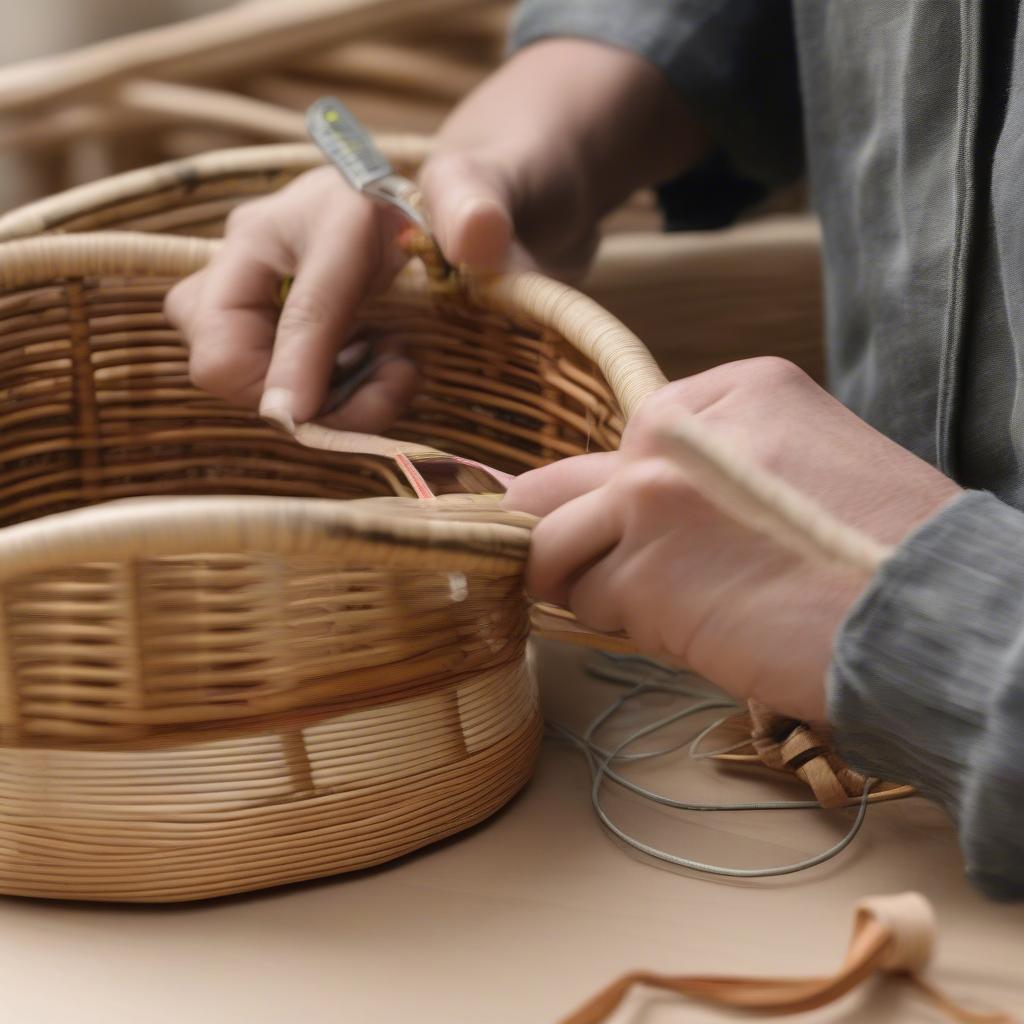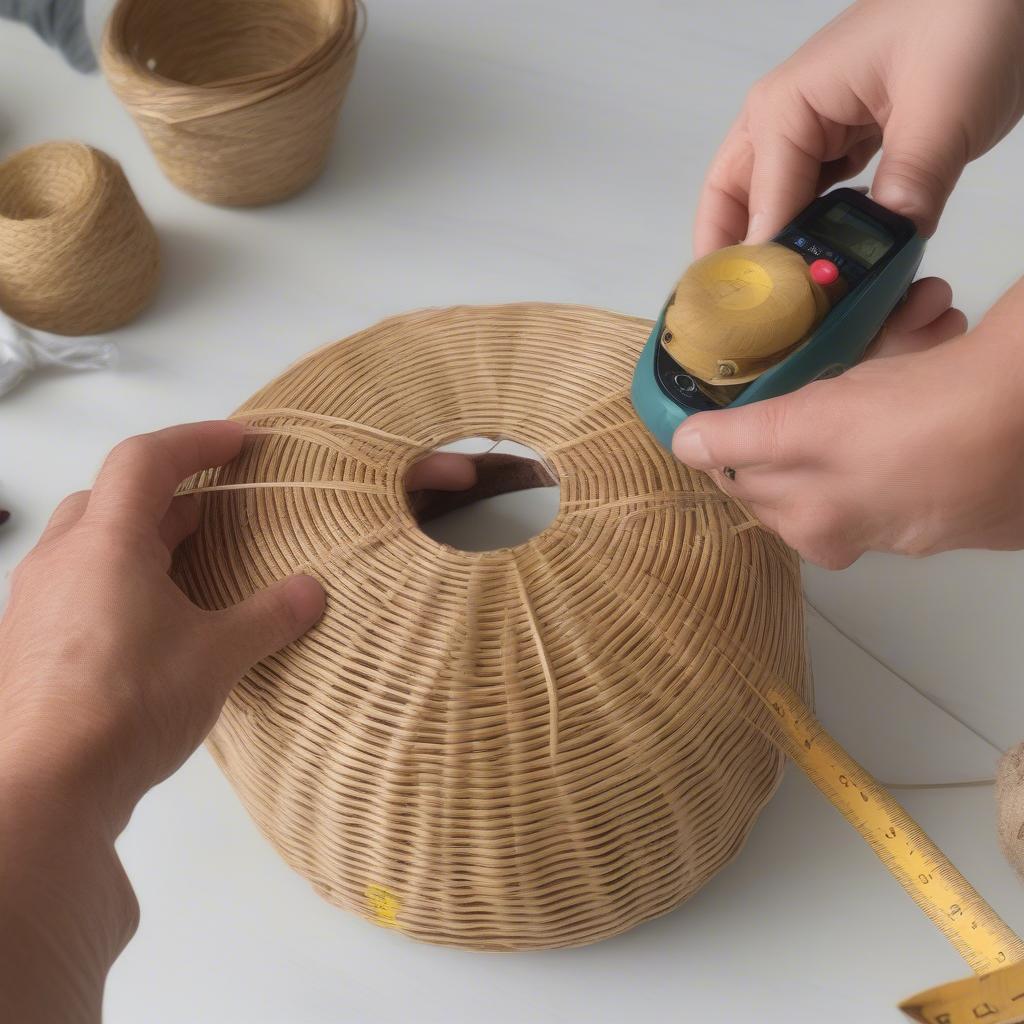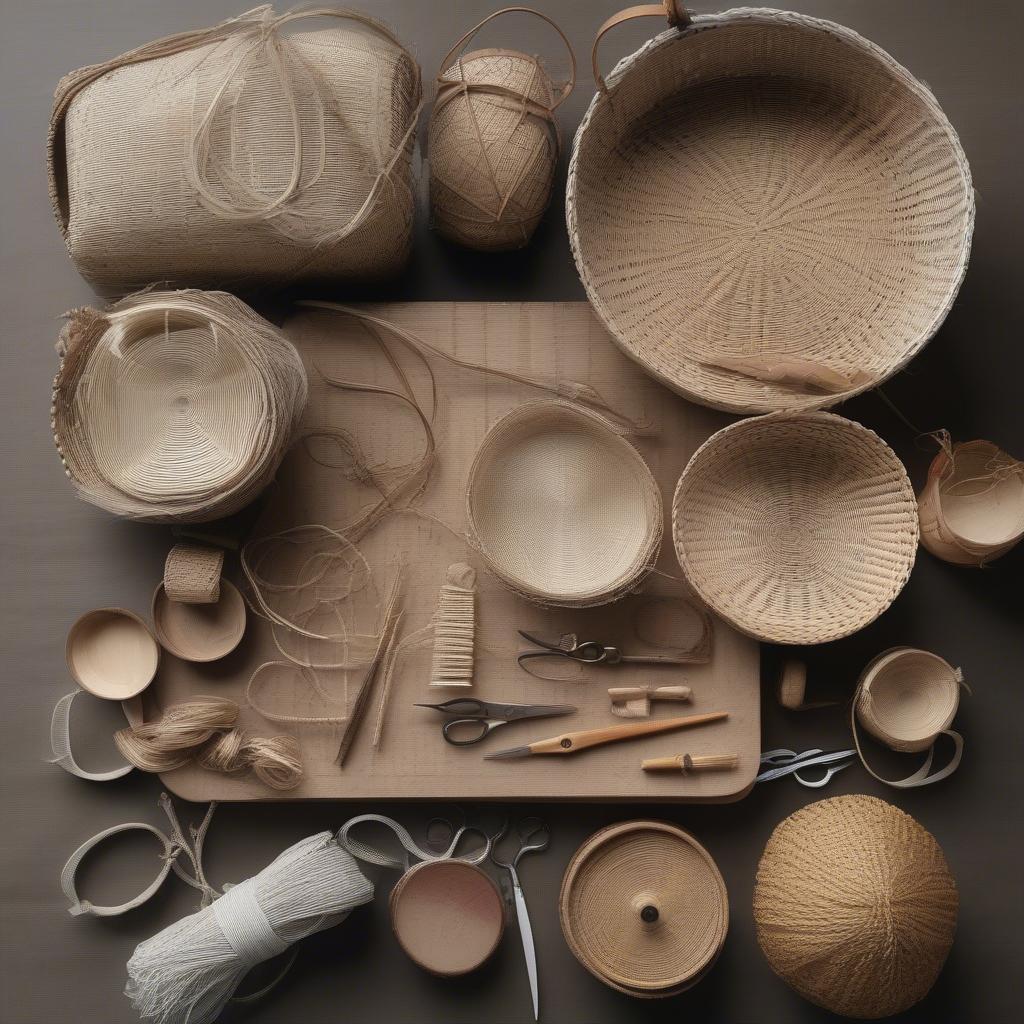Basket Weaving
Measuring Basket Weaver Length: A Comprehensive Guide
Understanding how to measure basket weaver length is crucial for achieving consistent results and bringing your weaving visions to life. Whether you’re a seasoned basket maker or just starting out, knowing how to accurately determine the required length of your weaving material – be it wicker, rattan, reed, or even drinking straw basket weaving – will significantly impact the final outcome of your project. This guide will delve into the various methods and considerations for Measuring Basket Weaver Length, ensuring you’re equipped with the knowledge to create beautiful and well-proportioned baskets.
Understanding the Importance of Measuring Basket Weaver Length
Before we dive into the specifics of measuring, it’s important to understand why accurate measurement is so vital. Incorrect measurements can lead to several issues, such as running short of material mid-project, having excess material that goes to waste, or ending up with a basket that’s not the desired size or shape. Precise measuring basket weaver length ensures that your weaving process flows smoothly, minimizes material waste, and allows you to create a finished product that meets your exact specifications.
 Measuring Weaver for Basket
Measuring Weaver for Basket
Methods for Measuring Basket Weaver Length
There are several methods for measuring basket weaver length, each with its own advantages and disadvantages. The best method for you will depend on the type of basket you’re making, the weaving technique you’re using, and your personal preference.
Using a Tape Measure
The most straightforward method is to use a tape measure. This is particularly useful for straight sections of weaving, such as the stakes or ribs of a basket. Simply extend the tape measure along the length of the material and note the measurement. Remember to add extra length to account for the weaving process itself, as the material will be bent and interwoven, requiring more length than the final dimension of the basket.
The “Wrap-Around” Method
For circular or oval baskets, the wrap-around method can be effective. This involves wrapping the weaving material around the base or mold of your basket and then measuring the length of the wrapped material. This method accounts for the curvature of the basket and provides a more accurate measurement than simply measuring a straight line. Thinking about weaving the top edge? Check out this guide on how to weave the top of a basket.
 Wrap-Around Method for Basket Weaving
Wrap-Around Method for Basket Weaving
Calculating Length Based on Weave Structure
For more complex weave structures, you may need to calculate the required length based on the specific weave pattern. This involves considering factors such as the number of weavers, the width of the weavers, and the spacing between the rows. This method requires a deeper understanding of the weave structure and may involve some mathematical calculations.
Factors Affecting Weaver Length
Several factors can influence the required weaver length, including:
- Basket Size and Shape: Larger baskets and more complex shapes will naturally require longer weavers.
- Weaving Technique: Different weaving techniques require different amounts of material. A tight weave will use more material than a loose weave.
- Material Type: The flexibility and thickness of your weaving material will affect the length required. For instance, working with a carved scarf joint can change your material needs, as explained in our guide on carved scarf joint basket weaving.
- Overlapping and Tucking: Remember to factor in extra length for overlapping weavers, tucking ends, and creating decorative elements.
Tips for Accurate Measurement
- Always add extra length: It’s better to have too much material than not enough. Add a few extra inches to your measurements to account for any unforeseen circumstances.
- Practice with scrap material: Before cutting your main weaving material, practice your chosen weaving technique with scrap material to get a better sense of how much length you’ll need.
- Consider the weave’s tension: A tighter weave will consume more material than a looser weave. Adjust your measurements accordingly.
- Label your measurements: Clearly label each measurement to avoid confusion later in the process.
 Basket Weaving Materials and Tools
Basket Weaving Materials and Tools
“Accurate measurement is the foundation of successful basket weaving. It’s the key to achieving the desired shape, size, and overall aesthetic of your basket,” says renowned basket artist, Anya Petrova.
Why Measuring Matters, Even with Nylon
Even when using materials like nylon for your basket weaving, as discussed in our weave basket nylon diy guide, measuring remains critical. Though nylon offers flexibility, knowing the right length ensures a balanced and aesthetically pleasing final product. Overestimating can lead to unnecessary bulk, while underestimating can result in a strained and unfinished look.
“Don’t underestimate the power of precise measurement. It’s the difference between a well-crafted basket and one that falls apart,” advises experienced weaver, John Miller.
Conclusion
Measuring basket weaver length is a fundamental skill for any basket maker. By understanding the various methods and factors involved, you can ensure accurate measurements and create beautiful, well-proportioned baskets. With practice and attention to detail, you’ll master this essential skill and elevate your basket weaving to new heights. Don’t forget to explore the intricate beauty of the Josephine Knot, discussed in our guide on how to weave a josephine knot basket, where precise measuring is paramount.
FAQ
- What is the best tool for measuring basket weaver length?
- How do I calculate the length needed for a circular basket?
- Why is it important to add extra length to my measurements?
- What factors can affect the amount of weaver material I need?
- How can I practice measuring without wasting my main weaving material?
- What happens if my weaver is too short?
- What happens if my weaver is too long?
Need help with your basket weaving projects? Contact us at Hanoi, Vietnam or Tech Avenue, Suite 12, San Francisco, CA 94105, USA. We have a 24/7 customer service team ready to assist you.
